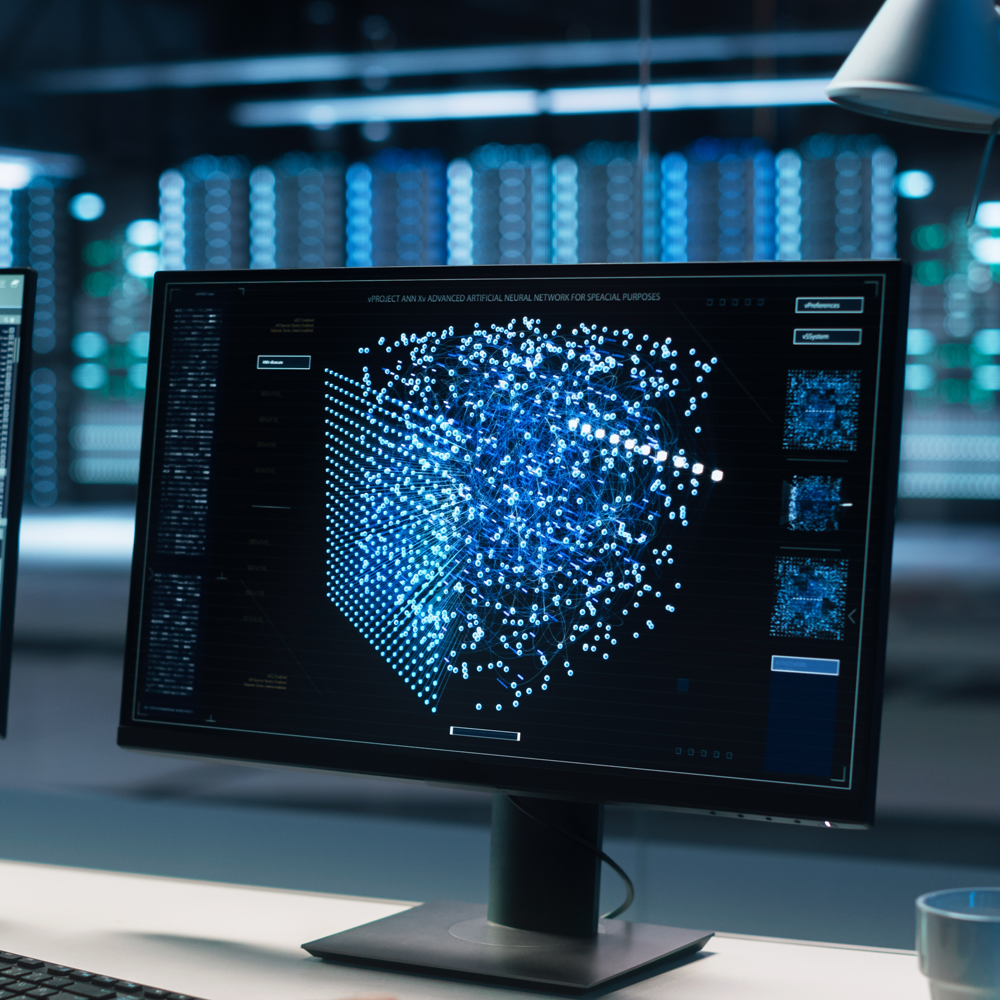How can we help you?
)
craftworks GmbH
Schottenfeldgasse 20/6a
1070 Vienna
AI Trends 2025:
What’s Hype and What’s Here to Stay?
This article explores six key AI trends in 2025 and demonstrates how craftworks harnesses them to address real-world challenges through practical case studies.
:quality(80))
Know-How
reading time: 7 min
Linda Gahleitner
:quality(80))
AI has rapidly evolved since the launch of ChatGPT, moving from experimental tools to real-world applications across industries. But in this fast-changing landscape, it’s often hard to tell which developments truly create value and which are just temporary hype.
At craftworks, we work with customers in the automotive, data engineering, manufacturing, energy, utilities, and materials industry to build AI solutions that solve concrete problems. We don’t jump on every trend. Instead, we apply technologies like generative AI, intelligent agents, and RAG models where they actually improve operations: from predictive maintenance to real-time anomaly detection.
In this article, we explore six key AI trends shaping 2025. For each one, we share where the technology stands today and how we at craftworks are putting it to work in real industrial environments.
Generative AI has shifted from early hype to a foundational tool in many companies. Since the 2022 launch of ChatGPT, many businesses have begun integrating it into everyday processes: from software development and document summarization to product innovation and customer support. While adoption is growing fast, many organizations are still navigating challenges like scaling, data quality, and governance.
At craftworks, we focus on where generative AI creates real value in industrial settings. Our visual inspection tool, navio VISION, uses fine-tuned generative AI models to detect defects in manufacturing environments, enhancing quality control and reducing manual effort. We're also developing solutions to support engineers through more intelligent technical assistance and improved documentation workflows.
Rather than following the trend, we apply generative AI where it drives measurable improvements in accuracy, speed, and operational efficiency.

AI agents are evolving from lab experiments into practical tools for automation. These systems can handle multi-step tasks independently, such as gathering data, analyzing it, and initiating actions. Gartner predicts that by 2028, one-third of enterprise applications will include AI agents capable of making autonomous decisions.
While many current implementations are still limited to narrow tasks, their potential is clear: managing repetitive workflows, accelerating operations, and improving responsiveness.
At craftworks, we use AI agents in industrial environments to automate tasks like scheduling inspections or identifying likely root causes of anomalies based on historical and real-time sensor data. These agents are embedded into live systems, especially in maintenance and quality control, where fast and accurate decision-making is essential.
Instead of replacing human expertise, they support it, helping engineers act faster and focus on solving complex problems.
While large language models (LLMs) like GPT get much of the spotlight, there’s a growing shift toward smaller, task-optimized models, often called Small Language Models (SLMs). These models are faster to train, easier to deploy, and more cost-effective. According to Forbes (2025), training an SLM can cost up to 90% less than training a large model, making them ideal for real-world applications where efficiency and adaptability matter.
SLMs also make it easier to fine-tune models for specific use cases, offering improved accuracy in industrial environments.
This shift ties closely to the rise of multimodal AI, systems that process multiple types of input, such as images, text, sound, or video. These models open up new possibilities in diagnostics, robotics, and quality control, especially when deployed on edge devices where low latency is crucial.
At craftworks, we build smaller, smarter models tailored to specific industrial tasks. For example, in our visual inspection tool, navio VISION, our models run directly on edge devices and are trained using customer-specific data. They can analyze images, machine signals, and text in parallel, supporting real-time, high-accuracy decisions on the factory floor. This leads to faster inspections, fewer false positives, and improved predictive quality.
Introduced by Anthropic in late 2024, the Model Context Protocol (MCP) is an open standard that helps AI models access external tools and data sources in real time. Instead of relying only on static prompts, AI systems can now interact with APIs, databases, and business systems, enabling more dynamic, task-oriented reasoning.
MCP operates on a client-server architecture: clients (like AI assistants or agents) request data or functions from MCP-compliant servers, which provide structured access to tools such as databases, maintenance logs, or scheduling systems. This modular setup is gaining traction across the AI industry, adopting it to build more capable, integrated AI systems.
However, as with any powerful tool, MCP introduces new challenges. Researchers have raised concerns around security risks, such as prompt injections or misuse of external functions. To deploy MCP safely, organizations need robust governance, including clear access controls and validation layers for external tool integrations.
At craftworks, we see protocols like MCP as essential to bridging AI with real industrial operations. Our platform navio already brings together customer data, machine learning models, and operational systems in a traceable, secure environment. This allows AI to go beyond analytics, enabling real-time actions like triggering maintenance alerts or process adjustments. By embracing open standards like MCP, we aim to make AI not just insightful, but operationally useful.
As AI systems become more advanced, ensuring their outputs are accurate and explainable is more important than ever, especially in high-stakes industries like manufacturing. Retrieval-Augmented Generation (RAG) is a key approach to achieving this. It combines the reasoning capabilities of large language models (LLMs) with access to real-time, trusted data sources like vector databases and knowledge graphs.
By grounding responses in verified content, RAG significantly reduces hallucinations and improves transparency. This architecture supports source attribution, fine-grained access control, and context-aware responses, making it well-suited for enterprise and industrial environments.
At craftworks, we apply RAG in our anomaly detection and predictive quality solutions. For example, we combine historical machine data with live sensor readings to give operators accurate, reliable information. This helps build trust in AI systems and supports confident decision-making on the production floor.
As RAG evolves, from simple retrieval to graph-augmented systems and hybrid search, it’s becoming a foundation for governance-ready, explainable AI. For us, it’s not just a technique, but a critical step toward delivering safe and scalable AI in industrial operations.
Reasoning models are designed to tackle complex problems step-by-step, more like how humans approach decision-making, and less like traditional generative models that simply predict the next likely word. These models use techniques such as chain-of-thought prompting, reinforcement learning, and structured inference to break down tasks logically and transparently.
Recent advancements, such as OpenAI’s o1 and o3, DeepSeek-R1, and Alibaba’s QwQ, have shown promising results in confidence calibration and accuracy, especially in scenarios that require multi-step thinking. However, reasoning models still face challenges: they typically require more computational resources and may underperform on highly abstract or unfamiliar problems.
Despite these limitations, reasoning models are already being explored in finance, compliance, and engineering, fields where precision and traceability are crucial.
At craftworks, we’re applying reasoning-based AI for quality prediction, especially in complex environments where factors like temperature, speed, and material properties interact. While human experts still supervise the process, early results show that these models can help identify root causes and recommend actionable next steps. We see this as a promising direction for reliable, AI-supported decision-making in industrial automation.

At craftworks, our mission guides everything we do: every day, we use our diverse expertise to develop innovative AI-driven solutions for the industry.
In manufacturing, our AI-powered visual inspection tools have lowered defect rates by over 30% on fast-moving production lines. In energy, our predictive maintenance models use AI to identify potential failures weeks in advance, reducing unexpected downtime. In material industries, our anomaly detection systems leverage AI to catch quality issues early, preventing shipment impacts.
These proven, operational AI solutions are developed closely with our clients and continuously refined through real-world use. You can read more on our Success Stories page.
AI in 2025 offers vast opportunities, but also plenty of distractions. Technologies like generative AI and retrieval-augmented generation (RAG) are already delivering real business value, while AI agents and reasoning models show great promise but require careful, thoughtful deployment. The key to success lies in matching the right AI tools to the right challenges.
At craftworks, we help companies navigate this evolving landscape. Whether through our products like navio and navio VISION or tailored AI solutions, we focus on applying AI where it truly makes a difference, in real industrial environments, solving real problems.
:quality(80))